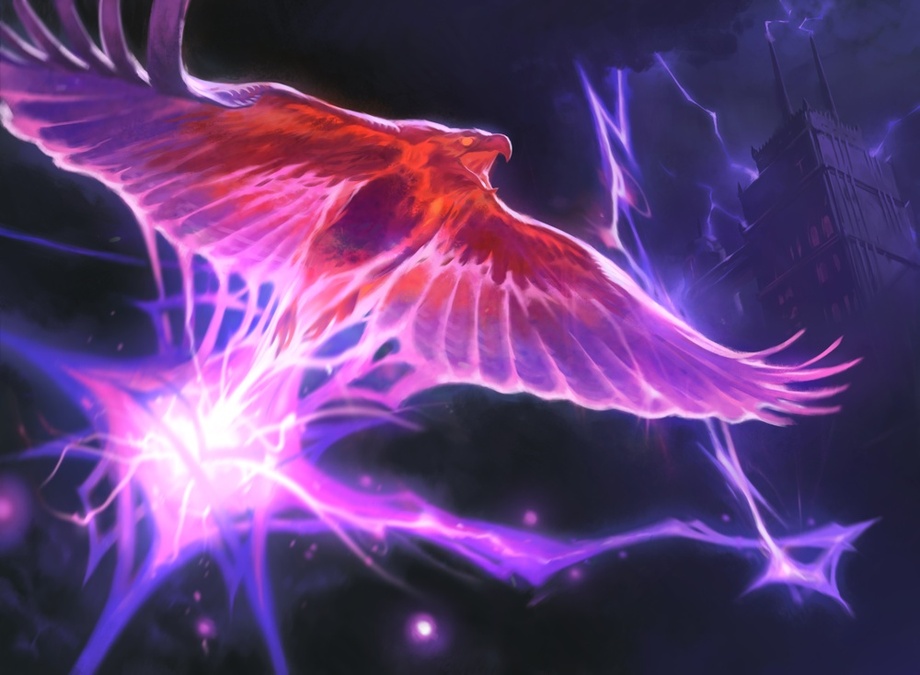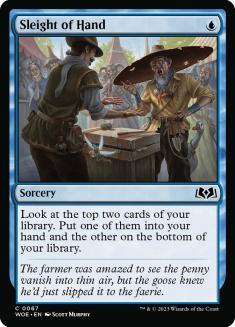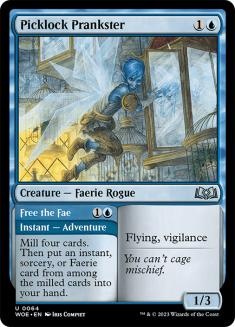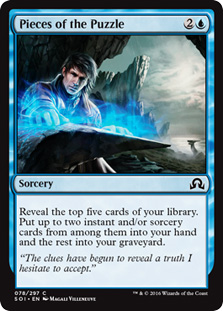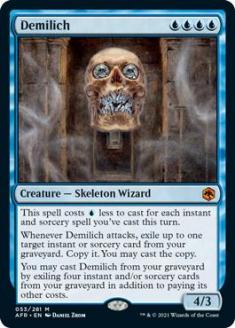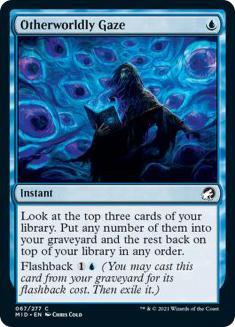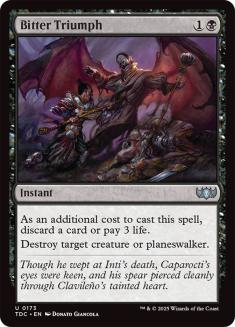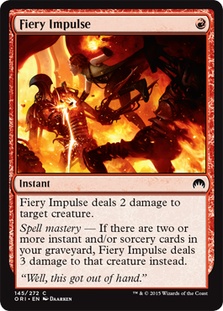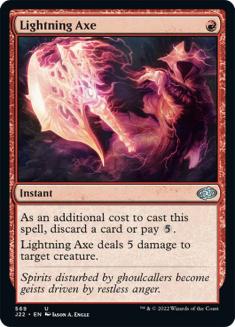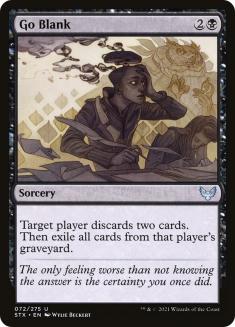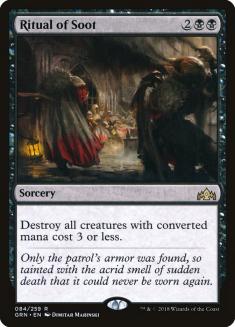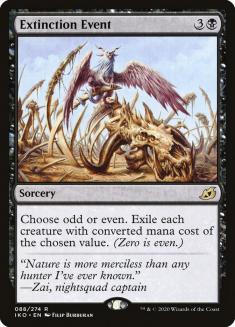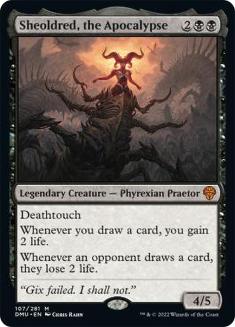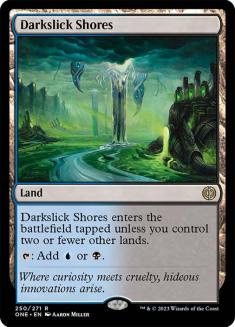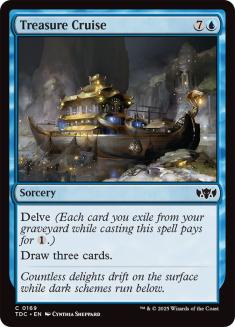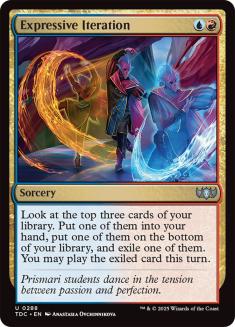Izzet Phoenix was already a success story of this Regional Championships cycle. Fuelled by some seemingly minor upgrades from Wilds of Eldraine, Pioneer’s perennial best deck rose from the ashes again in Lille to claim a Pro Tour invite for several players, including streamer and fan favourite Piotr Glogowski. At the first of Canada’s two Regional Championships, Steam Vents loyalist Boston Schatteman won a spot at next year’s World Championships with his trusty Ledger Shredders.
Pioneer looked much different then. Rakdos Sacrifice and Rakdos Midrange continued their struggle for control of the Blood Crypt, while Lotus Field Combo put up yet another incredible result at this level of play, and the much-maligned Mono-Green Devotion once again failed to put up numbers that would explain the volume of complaints about it.
Heading into Canada’s other Regional Championships in Toronto last weekend, a new threat stole the spotlight as the Discover combo decks seized control of Pioneer and demanded attention. The Quintorius version was an endangered species at the top tables, but the Geological Appraiser lists did well enough to earn an imminent ban, putting multiple copies in the Top 8 in Toronto while winning the South American Regional Championship for Guillermo Sulimovich.
There’s another story, though…
Izzet Phoenix posted an incredibly dominant performance in Toronto that would have raised eyebrows even back when it was the consensus best deck in Pioneer. Panicking pundits compared Boros Convoke to Hogaak and lost their minds over the Discover combos, but by these numbers, the broken deck was right here all along.
Phoenix Rises Again
Phoenix makes sense as a metagame choice in response to the Discover curveball – a pile of Fiery Impulses and Lightning Axes with dozens of draw spells giving consistent access to those or your sideboard cards is a potent recipe against a deck reliant on protecting a flimsy 3/2. Appraiser also helped Phoenix prey on itself by pushing out combo decks like Lotus Field that are slower but dodge that kind of interaction.
The deck’s consistent results before the Discover fever dream suggest this context only explains so much. Izzet Phoenix is the best deck in Pioneer again – and, unless some new twist emerges, will be the deck to beat at Pro Tour Murders at Karlov Manor in February.
The simple Sleight of Hand is a big part of that. If you have a healthy range of interests, you don’t care for Sleight of Hand – Consider and Opt fill all your cheap cantrip needs. If spending a mana and your opponent’s time staring at cards is the only thing you enjoy in life, having yet another effect like that is actually a big deal. Sleight makes it even easier to chain several spells in a turn to bring back Arclight Phoenix or make Treasure Cruise feel like Ancestral Recall.
A Phoenix Prank?
The other upgrade is more contentious:
It’s easy to write off Picklock Prankster as a Limited glue card or a crude attempt to tie Faeries and spellslinger themes together. In practice, Prankster is the Strategic Planning that Izzet Phoenix always wanted. Filling your graveyard while digging for specific cards is a fine resume, but the instant speed is a big deal, especially in post-sideboard games against slower decks where you want to dig for reactive cards but also want to keep those up if you have them already. Against the Appraiser menace, tapping out for an expensive draw spell might leave you dead to rights while Prankster keeps the cards flowing.
The creature half is an afterthought, but it’s not nothing – it’s a throwaway spell to trigger your other 1/3 flyer in Ledger Shredder, and that stat line is another nuisance for the Recruitment Officers, Voldaren Epicures, and Mausoleum Wanderers of the world.
A Deckbuilding Puzzle
Prankster directly competes with a former Phoenix staple in Pieces of the Puzzle – another enabler that was written off until Phoenix gave it a starring role. Unlike Prankster and the dozen copies of Consider / Opt / Sleight of Hand, Pieces actually puts you up on cards and lets you dig for specific cards or combinations of cards without the tough choices that come with the one-shot selection effects. In particular, Pieces is perfect for setting up the Galvanic Iteration + Temporal Trespass end-game that gives those Phoenix lists a unique way to go over the top of almost any opponent. Against a Rakdos Midrange opponent who is attacking your hand and graveyard at once, Pieces helps you refuel in a way Prankster can’t.
On the other hand, Pieces feels slow and clunky once you have had a taste of Prankster. One big selling point of Phoenix is its low curve and efficiency – the best Divination you can ask for is still a Divination. Taking the shields down to cast Pieces can be a big gamble, and whiffing on Pieces – whether that means just hitting a single, interchangeable spell or not seeing the card you desperately need – is backbreaking.
The choice of Prankster or Pieces is a statement about the speed of the format. In a long siege against Rakdos Midrange or Azorius Control, you want as many pieces as possible; when speed is all that matters, the Fae have your back.
Throwbacks
This overload of cheap spells that replace themselves also changes the context for some older cards. A few Phoenix lists have flirted with Demilich as a welcome backup threat that also benefits from self-mill, but it needs the full discount as often as possible. Sleight makes that more feasible, which in turn lets you commit fully to this angle with Otherworldly Gaze.
Going Grixis
As we learned in Toronto, it’s the Phoenix core that’s important here – the ‘Izzet’ part is up for debate!
Creatures (14)
Lands (19)
Spells (27)

Ha Pham took Toronto by storm with Grixis Phoenix, an idea frequently discussed but just now catching fire. This is a Dimir deck that gestures at the possibility of hard-casting Arclight Phoenix with a couple of Steam Vents but gets to avoid that often enough now thanks to a game-changer from The Lost Caverns of Ixalan.
Bitter Triumph is a fine removal spell on its own, jostling with Go for the Throat and Heartless Act for the two-drop removal slot in Rakdos Midrange lists with no discard or graveyard synergy. If you can turn the discard cost into an upside, you have a strong enabler and one of the best removal spells of all time. It’s a natural inclusion in Abzan Greasefang, but that deck couldn’t give Triumph a fitting debut while its old nemesis in Izzet Phoenix rules the skies – it fell to a new Phoenix variant to show it off instead.
Removing Removal
Moving from red to black involves tough tradeoffs with your removal. Fatal Push can be much better than Fiery Impulse or Torch the Tower against cheap but large threats, but is often much worse in a deck that can almost never willingly achieve revolt. Opponents riding the Discover bandwagon can gladly cast Geological Appraiser into one open mana as Fatal Push shrugs its shoulders, but would have to respect the red removal.
Lightning Axe is the natural comparison for Bitter Triumph and boasts that all-important efficiency – the difference between one and two mana is much bigger than it looks. When you can cast Triumph, you get what you paid for – a welcome answer to planeswalkers like Teferi, Hero of Dominaria or Karn, the Great Creator (gone but not forgotten?), and a clean answer to big creatures like Cavalier of Thorns or Trumpeting Carnosaur that outscale the red removal.
Seizing Thoughts
Thoughtseize needs no introduction, but it’s worth noting just how irreplaceable it is here. Traditional Izzet Phoenix has a glaring weakness to linear decks that don’t care about its wall of removal but certainly don’t want to get their thoughts seized. Lotus Field Combo is a nightmare matchup for Izzet Phoenix, but Grixis Phoenix at least has a fighting chance thanks to the black splash. Against the Azorius Control decks that were out in force trying to restore order this weekend, Thoughtseize is your best card and the biggest draw to black.
Sideboard Black
If red’s sideboard options are mostly more of the same, black offers something new. Discard and graveyard hate (or, with Go Blank, both at once) help against other blue decks or opponents who aren’t fighting fair, while the black sweepers let you recover against aggro. It’s tough for Boros Convoke to build a big army against a deck with more ways to find its sweepers consistently than any other deck in Pioneer.
A Potential Apocalypse
Izzet has fine alternate threats like Crackling Drake, but how about the format’s defining midrange threat instead? With a dozen cantrips and Treasure Cruise, Sheoldred quickly eases any pressure on your life total – and punishes other Phoenix decks for that same consistency! Sheoldred even dodges popular colour hosers like Mystical Dispute and Rending Volley that snag Crackling Drake or typical Phoenix backups like Ledger Shredder or Thing in the Ice.
Shoring Up Mana
All this is possible because of Darkslick Shores. The one big weakness of Dimir Inverter was the awkward fixing in the allied colours making it hard to enjoy the efficiency of the cheap blue cantrips and the Thoughtseize + Fatal Push duo. Choked Estuary and Drowned Catacomb were a drag on an otherwise dominant deck and made the idea of Dimir Phoenix dead on arrival. Darkslick Shores filled that gap at just the right time.
Cruising for a Bruising?
Previous ban explanations carved out a space for certain format pillars that would merit a ban by most other metrics – many cards have died already for Nykthos, Shrine to Nyx’s sins, and Karn may join that list on Monday. Treasure Cruise is banned or restricted in every larger format and can already claim credit for Izzet Phoenix’s previous reign of terror. If it didn’t have this diplomatic immunity, it would have a life sentence. Instead, a core part of Pioneer’s official identity is that it is a containment zone for the delve cards where players can get the thrill of playing with them without the format collapsing as a result.
That was a bold but realistic goal at first, but is it sustainable?
Dousing the Phoenix
As more cheap card filtering like Consider and Sleight of Hand joins Pioneer, finding and fuelling an early Treasure Cruise becomes more and more trivial. These cards are inoffensive on their own – they are no Ponder or Preordain – but once they reach this critical mass, they enable a hyper-consistent deck that does the same thing every game and spends a lot of time just moving cards between zones.
Izzet Phoenix isn’t as obviously outrageous as some notorious best decks from Pioneer or Modern, where Phoenix looked harmless by comparison, but its play patterns can be obnoxious too. Expressive Iteration took the blame for Treasure Cruise last time, but if this batch of results is any indication, the hammer may have to fall on Phoenix again eventually.

